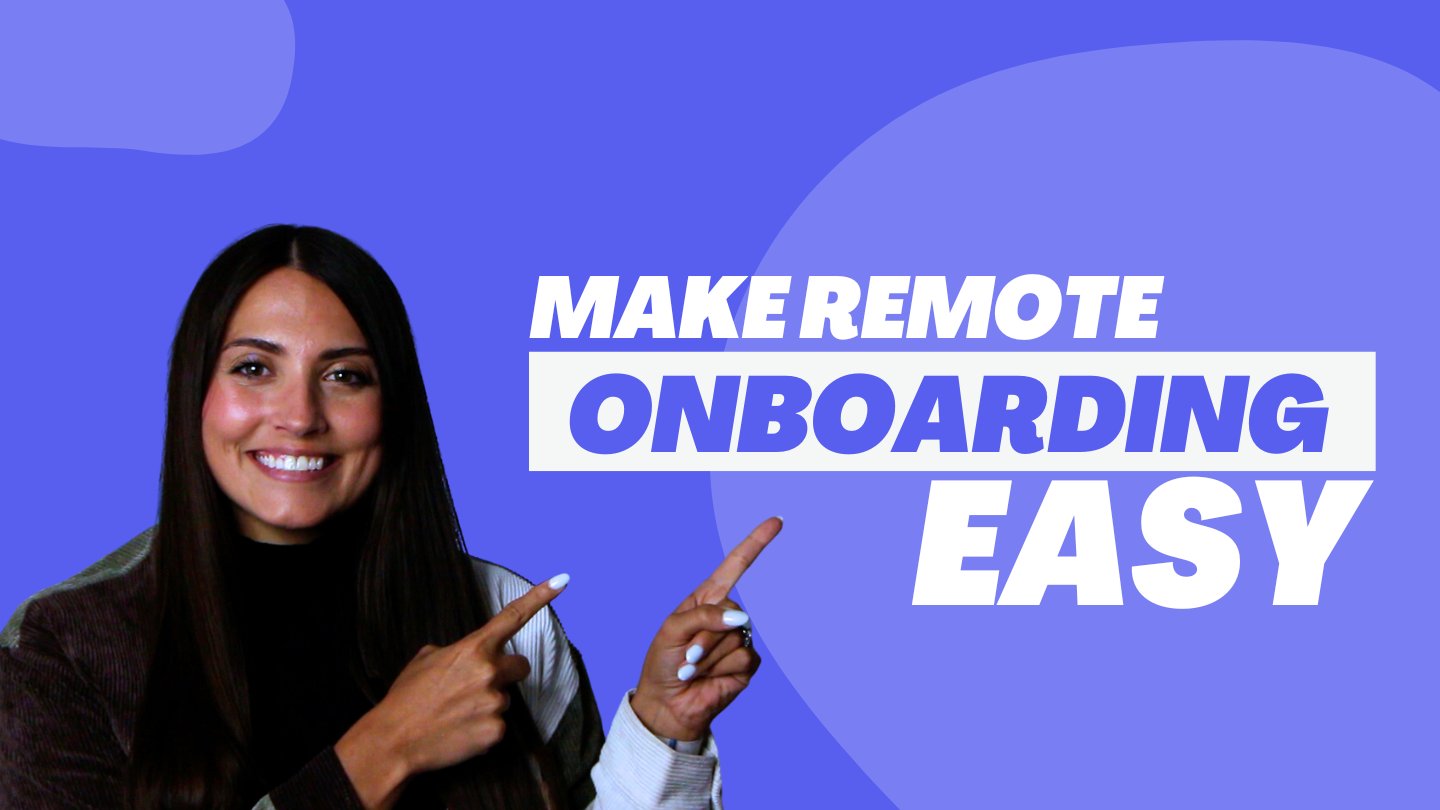5 Tips to Make Remote Onboarding Easier for New Hires
Training new hires at your company can be stressful — especially if you are remote training. But remote training doesn't have to feel hectic or disconnected.
As a virtual worker, I was trained 100% remotely at ScreenSteps (a knowledge ops solution) — and it was an incredible experience. And that's because of the training program my managers put together to help me acclimate to the company. So I'm sharing what they did with you.
Watch this 4-minute video for five tips that will make remote training easier. Then keep reading for more tips.
Tip #1: Prepare for remote onboarding
Onboarding a new hire isn't something you just show up and do. It takes preparation. You need to create a plan for how you will transfer knowledge to your new hires.
New hire training involves teaching foundational knowledge, running hands-on practice activities, and providing resources that new hires can continue to use post-training.
Often, businesses use a knowledge management system, like a knowledge base or knowledge ops platform, to make those resources more accessible.
PREPARATION TIP
Before a new hire begins, run a Find & Follow Workshop for the new hires role. The workshop helps you identify the systems and tasks the new hire will need to learn. That way you know exactly what to teach them.
If you have a role — like call center agent or bank teller — for which you frequently train new hires, then you only need to run the workshop once for that role.
Tip #2: Set clear expectations
Coming into a new job, everyone has preconceived expectations. Your new hires will have hopes for what they'll get out of the job. Your managers will have expectations for how quickly the new hire will learn and get up to speed on their jobs.
Lay out the expectations. Clearly communicate the company culture values, and norms.
It helps to set up a timeline to show performance and growth expectations. Using goal-oriented software, like Lattice or 15Five, can help with that.
Tip #3: Utilize onboarding software
Software is meant to make everyone's lives easier.
Depending on your knowledge transfer strategy, your company will use different onboarding software. You could use courses software, like a learning management system (LMS), or you could use a knowledge base for employee support resources, or you could combine them both with a knowledge ops platform.
And, of course, you can't forget AI. Artificial intelligence can help you create your training courses and employee support guides if you know how to use the technology properly. Learn more on how to use AI in knowledge management here.
Tip #4: Use a chat messaging system
Provide a way for your new hires to easily contact you. A chat messaging system, like Slack or Microsoft Teams, is the simplest way to open the communications line.
This allows new hires to ask quick questions, receive updates, and collaborate even when you aren't in the same room.
Tip #5: Assign a mentor
Learning is better when you have a mentor you trust. A reliable mentor provides new hires with a safe place to ask questions and receive support.
This builds connections and relationships that will help your new hires during training and further into their careers.
Set your new hires up for success
When you have a complete new hire training program, it is easier for everyone.
Trainers know the information they need to cover. New hires feel supported and more confident. And managers and supervisors get new hires who finish training ready to work.
Want to set your new hires up for success?
Build a full new hire training program with the help of this free new hire training playbook. The guide helps you create a new hire training curriculum that prepares independent and confident employees in 30 days or less.



